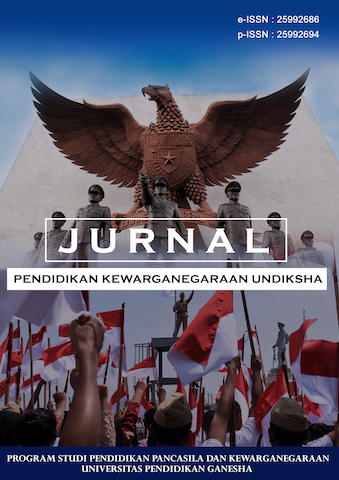KEPEMIMPINAN LEMBAGA PEMASYARAKATAN: GAYA KEPEMIMPINAN DAN PEMBERIAN MOTIVASI MEMPENGARUHI KEPUASAN KERJA PETUGAS PEMASYARAKATAN
Keywords:
Corrections Facilities, Correctional Institutions, Motivation, Leadership.Abstract
The aims and objectives of this research are to test the level of authority leadership, motivation, commitment of an organization, intelligence and compliance with the ethics of correctional officers. Studying the effects of leadership on authority, motivation, organizational commitment and intelligence on compliance with applicable regulations. Achieving the goals of an organization is also due to leaders who are able to commit to always advancing the organization they lead, especially by providing motivation to improve the quality of work of its members. Therefore, it is necessary for leaders to instill motivation and direct involvement in the field in order to know the actual situation and the need for the ability to think and learn what influences the performance of correctional officers in the field. The method used in this research is literature study by analyzing and searching articles or previous research. With high motivation, employees consider the importance of whatever work they undertake so that employees will automatically show discipline in carrying out or completing their work. Therefore, leadership has a positive and significant effect on organizational participation. The better the leadership of the head of the correctional institution (Kalapas), the higher the organizational commitment of the correctional institution. The creation of a work commitment also of course requires support based on its members who are always serious and focused on one goal, namely to advance the organization, specifically in this case the correctional organization.
References
Anwar Prabu Mangkunegara. (2000), Manajemen Sumber Daya Manusia Perusahaan. Bandung: PT Remaja Rosadakarya.
Armanu Thoyib. (2005), ”Hubungan Kepemimpinan,Budaya,Strategi,dan Kinerja:Pendekatan Konsep,” Jurnal Manajemen & Kewirausahaan, Vol.7, No. 1, Maret 2005, h. 60- 73
Agle, B. R., N. J. Nagarajan, N. J., Sonnenfeld J. A., & Srinivasan, D. (2006). Does CEO charisma matter? An empirical analysis of the relationships among organizational performance, environmental uncertainty, and top management teams' perceptions of CEO charisma. Academy of Management Journal,49(1), 161-174.
Cameron, K. S., & Quinn, R. E. (2006).Diagnosing and changing organizationalculture: Based on the competing values framework. The Jossey-Bass business & management
Dilyanti, Riva., dkk. 2017. “Pengaruh Kepemimpinan, Beban Kerja, Dan Lingkungan Kerja Terhadap Komitmen Organisasi Petugas Jaga Di Lembaga Pemasyarakatan Klas II A Mataram.” Jurnal Magister Manajemen Universitas Mataram.
Kartono K. (2011). Pemimpin dan Kepemimpinan. Jakarta: PT. Raja Grafindo Persada.
Minardo, Melissa. 2017. “Perceived Leadership Style, Gender, and Job Satisfaction in County Jail Correctional Officers”, Walden University ScholarWorks.
Santiago, Nancy Elizabeth. 1998. “Factors Affecting Leadership Styles of Prison Wardens: A Case Study of Public Adult Prisons Within Virginia,” Theses and Dissertations in Urban Services - Urban Management.
Downloads
Published
Issue
Section
License

This work is licensed under a Creative Commons Attribution-ShareAlike 4.0 International License.
Authors who publish with the Jurnal Pendidikan Kewarganegaraan Undiksha agree to the following terms:
- Authors retain copyright and grant the journal the right of first publication with the work simultaneously licensed under a Creative Commons Attribution License (CC BY-SA 4.0) that allows others to share the work with an acknowledgment of the work's authorship and initial publication in this journal.
- Authors are able to enter into separate, additional contractual arrangements for the non-exclusive distribution of the journal's published version of the work (e.g., post it to an institutional repository or publish it in a book), with an acknowledgment of its initial publication in this journal.
- Authors are permitted and encouraged to post their work online (e.g., in institutional repositories or on their website) prior to and during the submission process, as it can lead to productive exchanges, as well as earlier and greater citation of published work. (See The Effect of Open Access)










